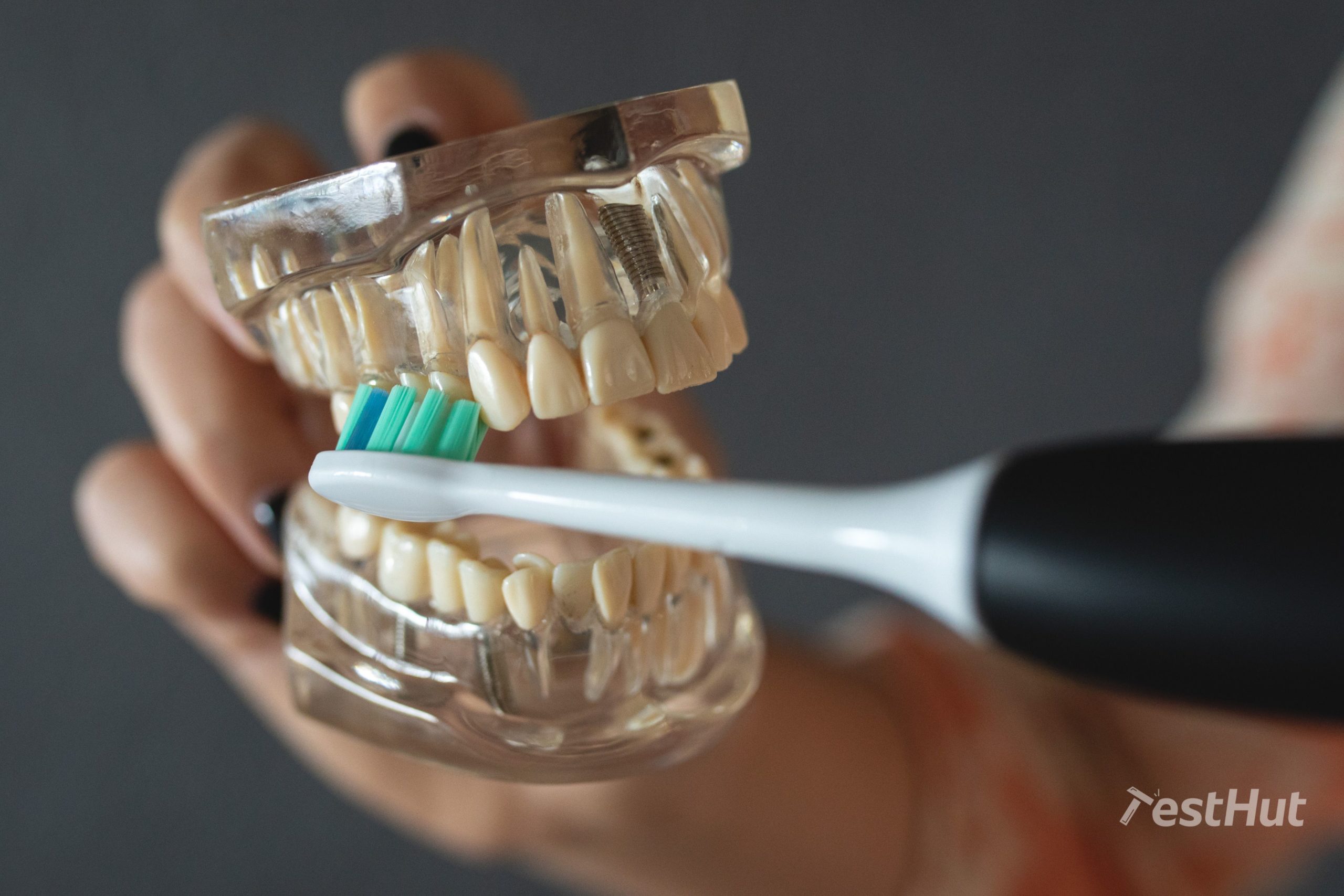
How to Use an Electric Toothbrush
Some electric toothbrush users may think that the powerful cleaning action is the key to keeping your mouth and gums healthy, but there is more to it than that. Although the electric power can be beneficial, the most important part is your cleaning technique. Whether this is your first time using an electric toothbrush, or even if you have had one for a long time, are you sure you are brushing your teeth right?
TestHut’s team has spent months researching electric toothbrushes, hours reading instruction manuals, and watching videos; we also talked with dentists, and we have been dedicated electric toothbrush users for years. Now we want to share our knowledge! Here’s everything you need to know about brushing your teeth with an electric toothbrush.
How to clean: Proper technique
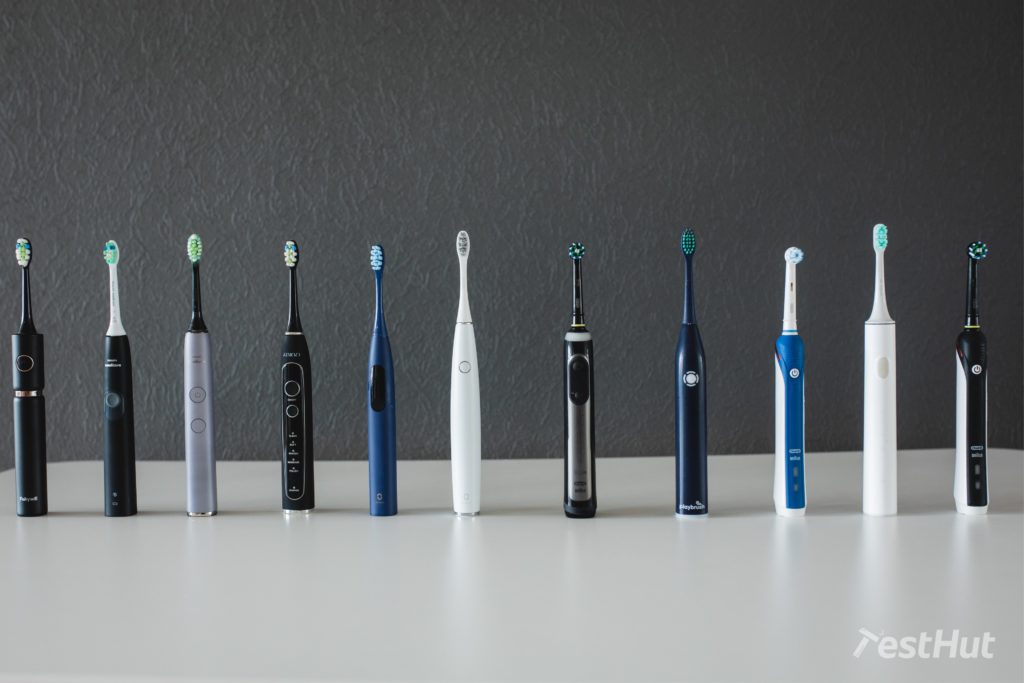
There are some differences between sonic and oscillating brushes (and we’ll discuss them later in the article); however, in general, a cleaning session with an electric toothbrush should include these steps:
Step 1: Apply toothpaste first
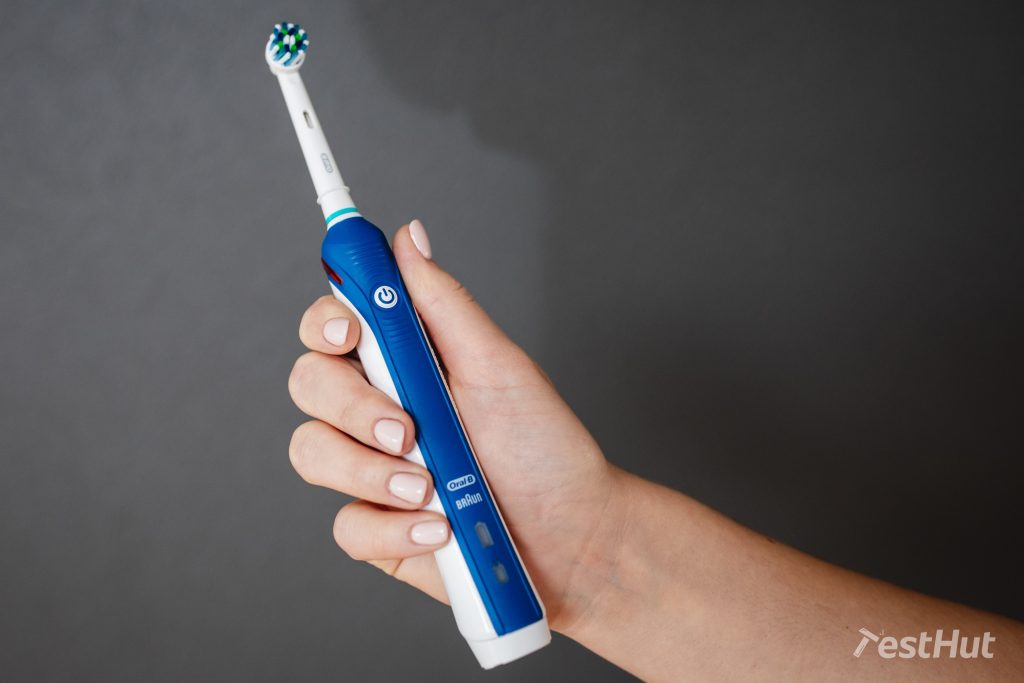
Wet the bristles and apply a small amount of toothpaste. To avoid splashing, turn on the brush only after it’s in your mouth.
Note: A few toothbrushes, like the Oclean X Pro and Oclean One, have an Anti-splash mode—when it’s enabled you can turn the brush on and then apply the paste without worrying. The brush will hold back the power before the bristles touch your teeth.
Step 2: Imagine your mouth in multiple sections
What you want to do is divide your mouth into 4 or 6 sections (depending on your brush’s pacer) and focus on each area separately. Almost every electric toothbrush will help you with this step, built-in pacers will remind you every 30 or 20 seconds to change sections.
For example, if your brush has a 2-minute timer and a pacer with 30 second intervals, imagine your mouth in 4 sections. If it signals every 20 seconds, divide your mouth into 6.
Step 3: Clean
The process of cleaning depends on whether you are using a sonic or oscillating brush. If the differences between these are not clear, oscillating brushes have round heads that rotate in a circular motion while standard sonic brushes look very similar to manual toothbrushes and the head vibrates back and forth very quickly.
After you’ve cleaned the outside surfaces of your teeth switch to inside and continue with chewing surfaces as well as behind the back teeth.
Cleaning With a Sonic Toothbrush
- Place your toothbrush at a 45-degree angle towards the gumline.
- Press the button to switch on the brush and apply light pressure. Start with the outside surfaces of your teeth.
- Slowly slide across your teeth in a small back and forth motion* until you reach the end of the first segment.
Cleaning With an Oscillating Toothbrush
- Place the toothbrush against your teeth.
- Press the button to switch on the brush and apply light pressure. Start with the outside surfaces of your teeth.
- Hold the brush head in place for a few seconds before moving on to the next tooth.
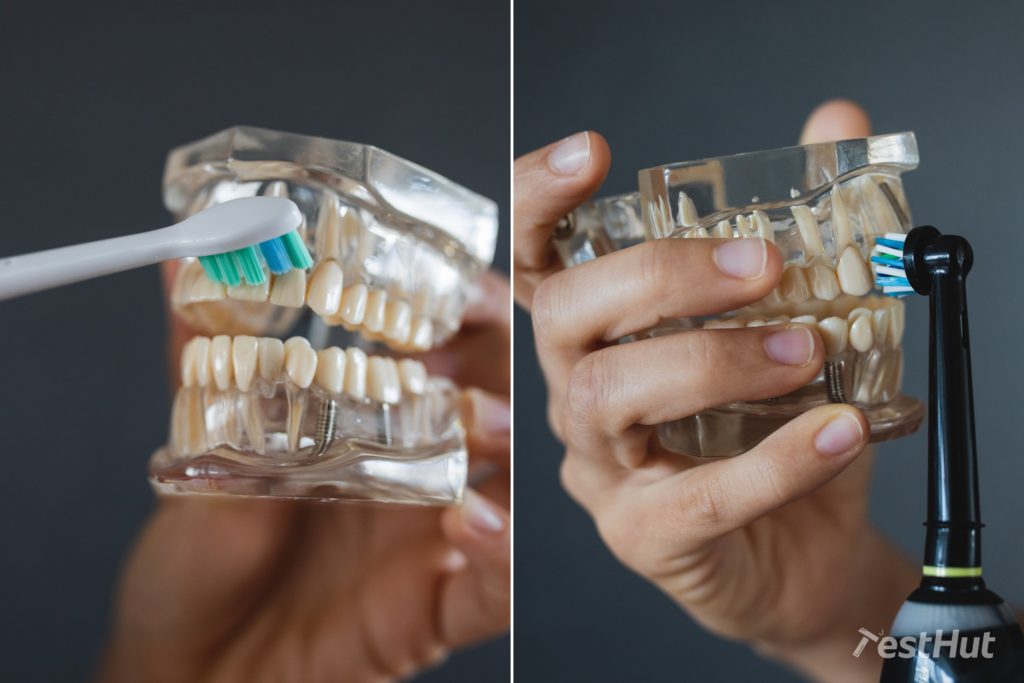
Note: cleaning your teeth with an electric toothbrush that has low power will require more vigorous movements (just like with a manual brush). We don’t recommend such electric toothbrushes here at TestHut, because we believe that the brush should do the work for you. To achieve better results with less power, you could start to scrub, which is bad for both your teeth and gums.
Continue by cleaning all sections of your teeth. The pacer will guide you through sections, and the timer will announce the end of the cleaning session usually by vibrating several times. Some toothbrushes have an automatic shutdown feature while others continue operating until you switch them off.
Getting used to guided sessions
One thing I want to add—for beginners, getting used to the timer and the pacer can take some time. Most people only brush for 30-45 seconds, while others complete their cleaning sessions in 3 minutes. When I tried an electric toothbrush for the first time, I was overwhelmed by the power and preoccupied with an ambition to stay caught up with the pacer, so I didn’t focus on cleaning.
So from my experience, it is better to slowly develop your cleaning technique than rush through sections and end up only partly cleaning the surface of your teeth. Just turn on the brush again and finish your session at your own pace after the 2 minutes is up if you need more time.
Step 4: Clean other areas of your mouth
After the 2-minute timer beeps it may seem that the cleaning session is over, but don’t forget to clean your tongue and other areas of your mouth just like you would with a manual brush.
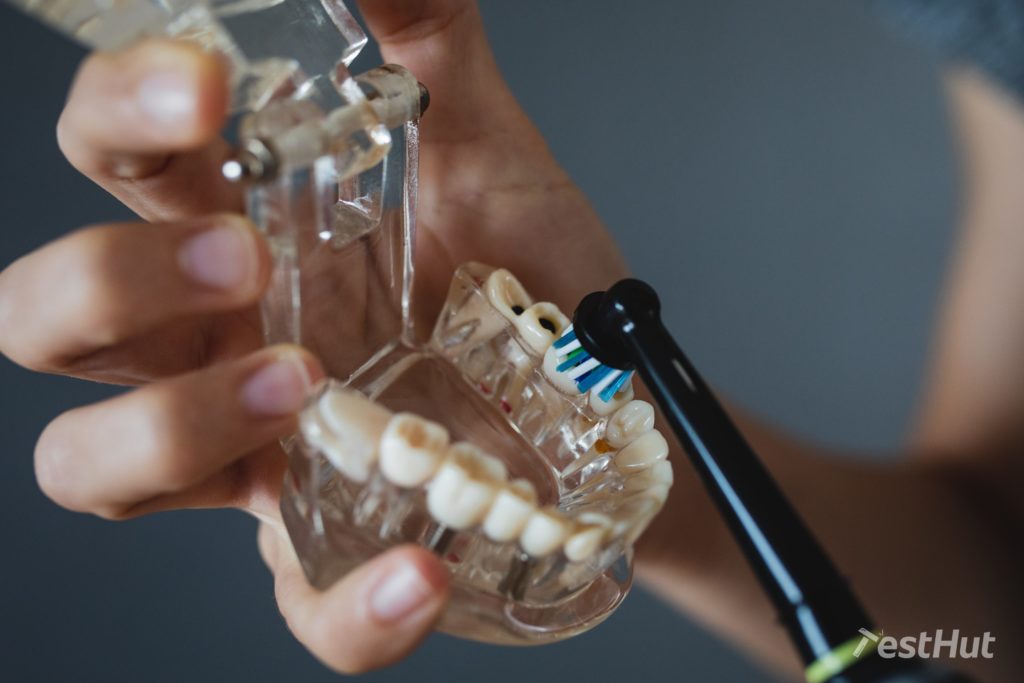
For this task, you can either use an electric toothbrush as a manual brush or turn it back on and continue with motorized action. High-end electric brushes, like the Philips DiamondClean Smart or the Oral-B Genius X, have special Tongue Clean modes, so you can use them, but in practice, it doesn’t make much of a difference when it comes to cleaning. Usually, Tongue Clean mode just uses a lower power setting to save battery life.
Step 5: Don’t forget to floss
As powerful and effective as electric toothbrushes are, they still can’t replace flossing. It’s important to clean your interdental areas so the plaque doesn’t build up in hard-to-reach places.
Repeat Cleaning twice a day
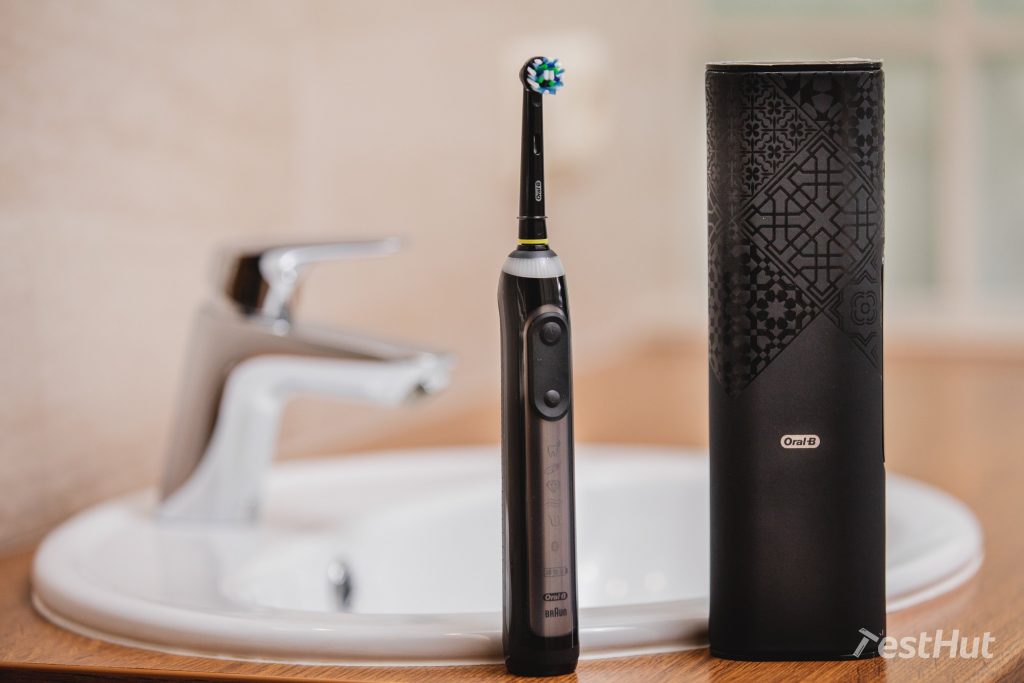
While most of the brushes will help you to achieve at least a 2-minute long cleaning session, you are responsible for being consistent and brushing at least 2 times a day.
If you’re struggling to push yourself to clean, you can consider electric toothbrushes with smart apps—they will send you notifications when it is time to brush, but these features come at a higher price. A simple reminder in your smartphone will also do the trick.
Switching to an electric toothbrush
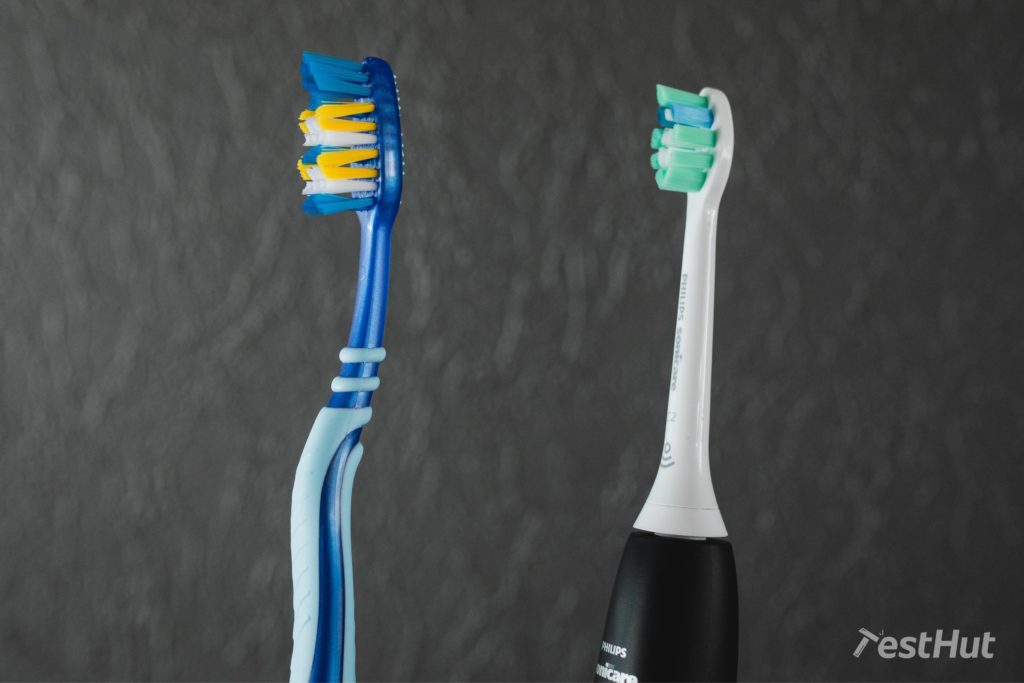
The switch from manual to electric toothbrush may seem a little daunting at first. Fortunately, to make it easier for you, several electric toothbrush manufacturers have created a mode for beginners. This means that the brush will gradually increase in power during the first week of use. This function helps to become acquainted with the brush, its power, and to adjust your cleaning technique.
If you feel like you’ve mastered the art of brushing your teeth with an electric toothbrush sooner, the break-in mode can be disabled—just look for instructions in the user manual.
But what can you do if your new brush doesn’t have such a feature? Don’t worry, there are other ways to get used to the powerful action. If your toothbrush has a sensitive mode, switch to this setting for a lower intensity cleaning or simply look for a brush head with softer bristles, usually called ‘Sensitive’ or ‘Gum Care’.
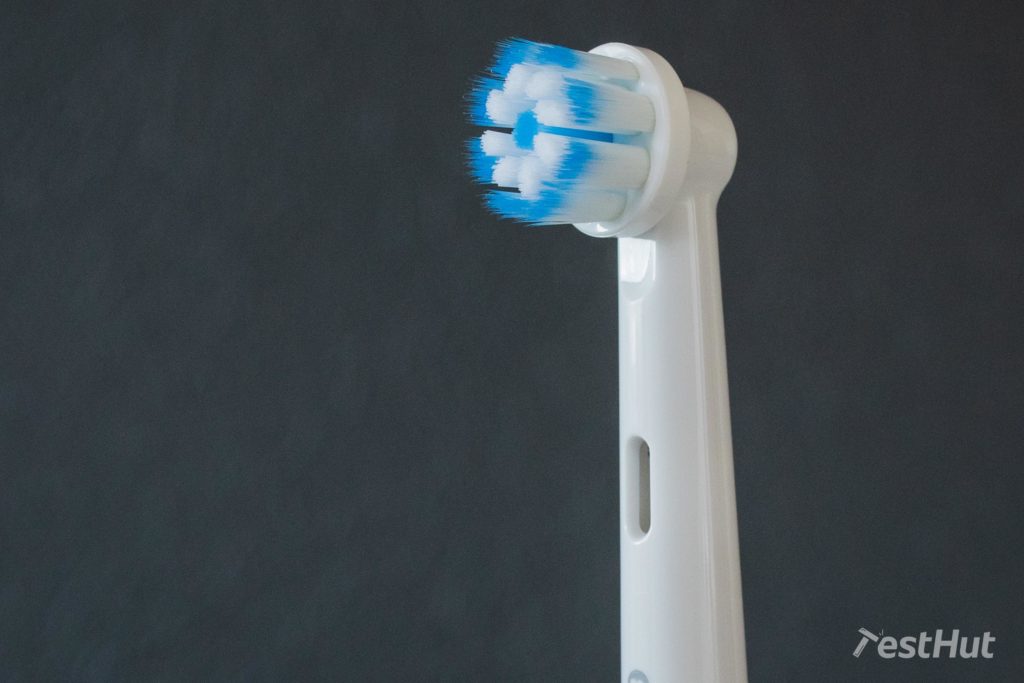
Taking your time and adjusting the cleaning power will help you not only to develop a more thorough cleaning technique but also to protect your gums. Some first-time electric toothbrush users experience bleeding gums, therefore the best thing to do is start slow and learn how to clean correctly.
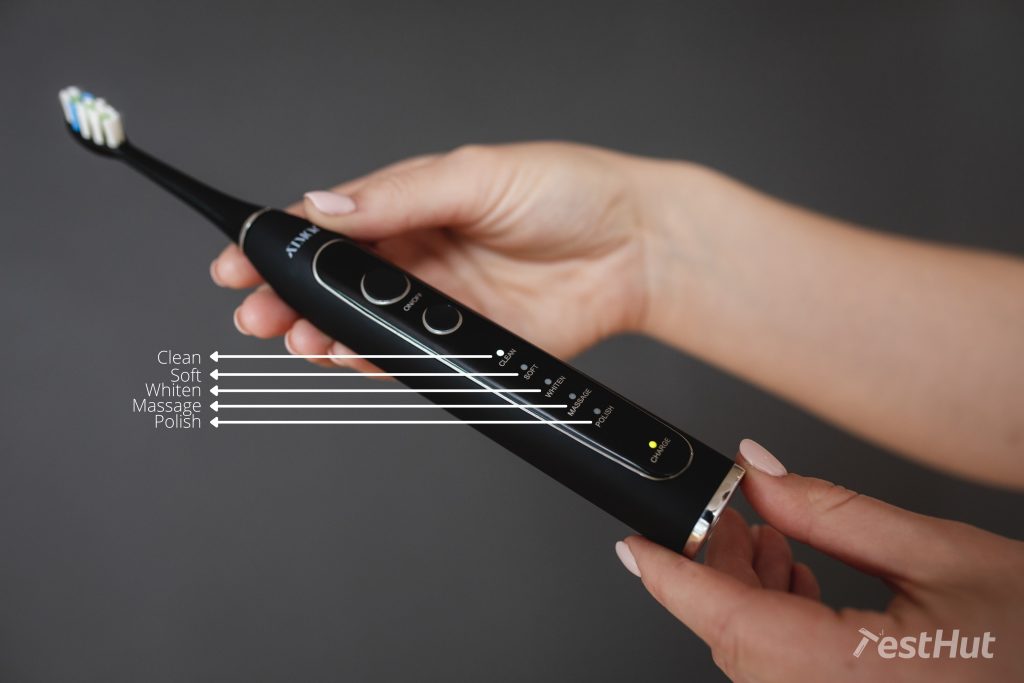
Be aware that bleeding gums can still occur during the first week of using an electric toothbrush, but if the bleeding continues you should stop using the brush and visit your dentist to find out the reason for this and receive advice on what to do next.
Applying the right level of pressure
One thing that my dentist always says to me is ”more pressure doesn’t mean better cleaning results.” And this goes for both manual and electric toothbrushes. But as the electric brushes come with powerful movements, it is more important not to press your toothbrush too hard against your teeth and gums.
Pressure sensors
Of course, for such an important issue, toothbrush manufacturing pioneers, Oral-B and Philips, have developed a solution. Most of their toothbrushes have built-in pressure sensors, which will help you to avoid pressing too hard and damaging your teeth or gums. If your brush comes with a pressure sensor, it will automatically be enabled when you purchase your brush, therefore you don’t need to take additional action.
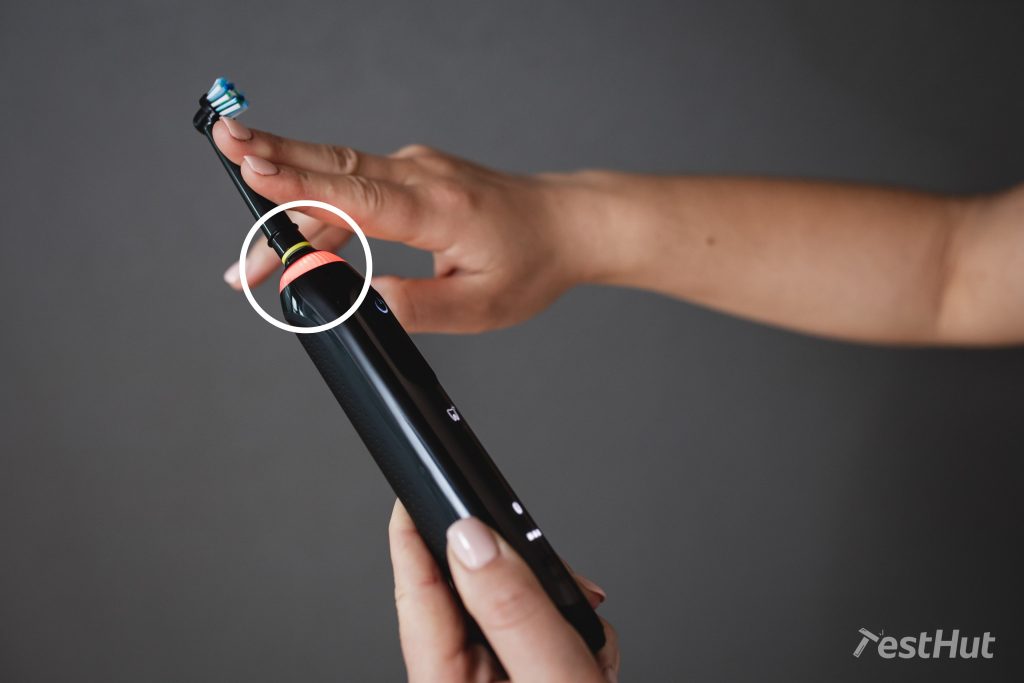
How does it work? Simple. When you apply too much pressure on your teeth, the brush will slow down (you will feel the reduction of power) and it will send you a signal, like, a steady red light on the handle. The only thing you have to do is reduce the pressure and the brush will automatically return to its full power. Eventually, you learn how to use the right amount of pressure.
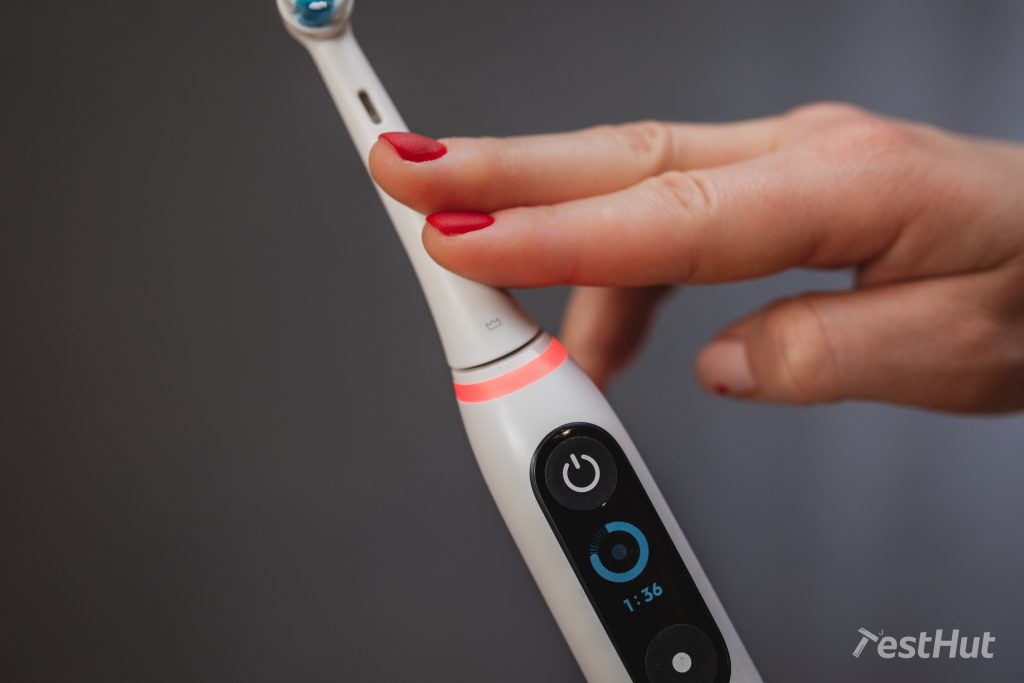
For those, who already own an electric toothbrush without a pressure sensor, don’t worry, just apply slight pressure and never use your body strength to help along with the cleaning. Let the toothbrush do the work. One simple trick is to use a pencil-grip with your fingers instead of holding the brush with your fist. This makes it almost impossible to press too hard!
How to know you’re doing a good job
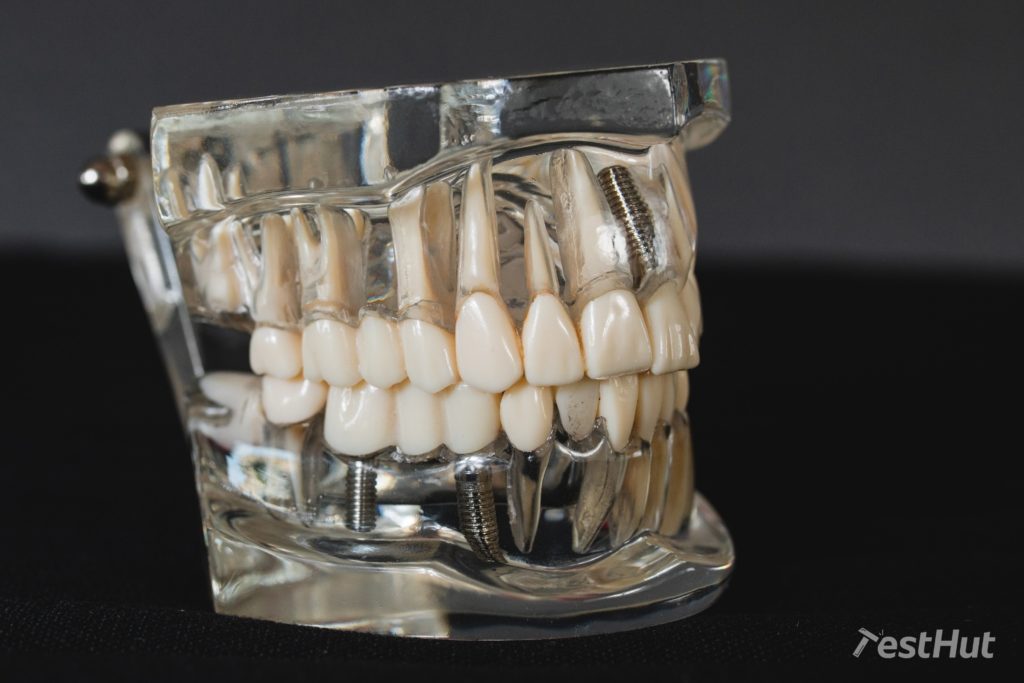
This advice is meant for all brushers—beginners, masters, sonic or oscillating brush owners, manual brush users, etc. It is important to keep track of how well you are cleaning. Unfortunately, plaque tends to build up in the long term and that can cause all sorts of dental issues.
Electric toothbrushes will help you to achieve better results, but still, it is essential to track your progress. And there are a few things you can do.
Dentists recommend visiting a professional once every 6 months. Of course, during these visits, you can ask to examine your cleaning routine and plaque buildup on your teeth and gum line. A dentist or a hygienist will also help you to get rid of the plaque buildup.
If you want to follow your progress at home, you can buy plaque disclosing tablets that will highlight areas where plaque tends to build upon your teeth. Some brands even offer two-color pills that will show you which plaque is new and which has accumulated in the long term. These are very simple, cheap, and accessible pills. A lot of us have probably used them in our childhood while learning how to brush our teeth.
Electric toothbrushes and dental treatments
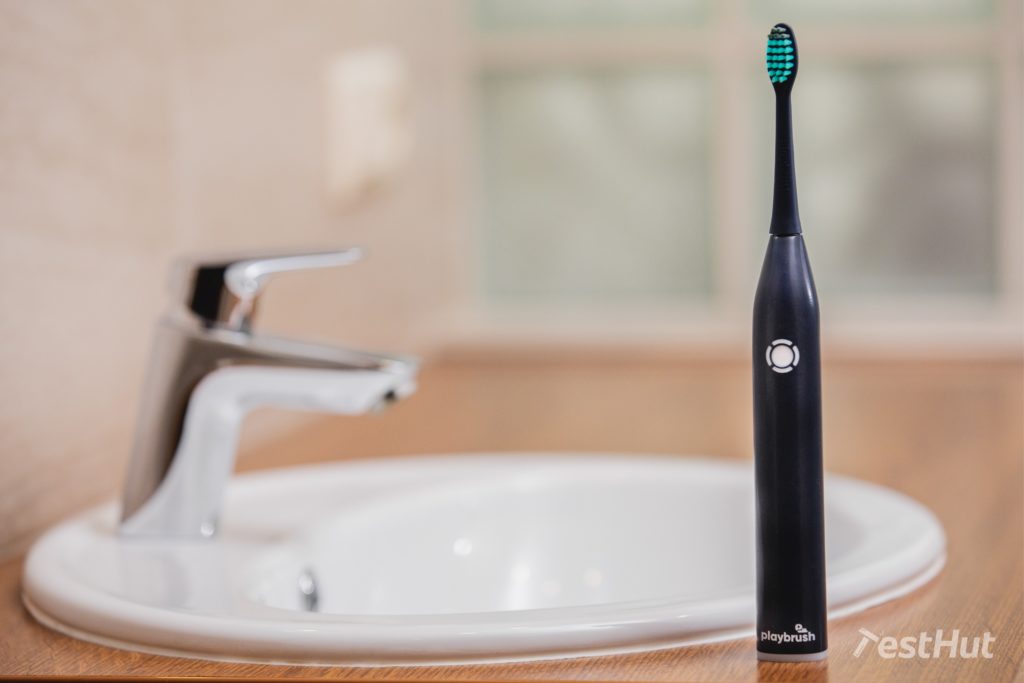
For those who are just about to buy their first electric toothbrush, questions about the safety of your dental fillings, crowns, or implants are completely normal. Using an electric toothbrush on them is completely safe. And no, you won’t break your teeth.
We know that electric toothbrushes are powerful, but if your dental fillings are standard quality, nothing is going to happen to them. If they are not, then electric toothbrushes are not the problem, but your dental work should probably be updated.
Simply use your brush as described in this article. If you’re still not sure, you can always use the sensitive cleaning mode or talk to a dentist about your unique situation and develop an adequate cleaning technique.
What about braces?
In short, using an electric toothbrush if you have braces is perfectly fine. They are not only safe, but also helpful for people with orthodontic appliances. It is easier to get around the brackets and hard-to-reach places since the brush is doing the cleaning part for you.
Since I have braces myself, here are some additional tips on how to choose the best brush for you. Basically, any electric toothbrush is braces-safe. Even oscillating brushes, like Oral-B, with their Ortho brush head are suitable. In fact, these brushes are the most convenient when it comes to cleaning technique. But during my tests, I found that Oral-B brushes with Ortho head are not as effective as sonic brushes.
If you are just about to buy your first electric toothbrush, I strongly suggest looking for a sonic brush—and a powerful one. Any brush head will do, but I found that whitening heads are too firm for braces. Standard or sensitive brush heads work just fine.
I feel like this goes without saying, but don’t forget to completely clean your braces with other brushes suggested by your orthodontist. An electric toothbrush will only replace your manual toothbrush, you still need to use a special interdental ortho brush.
Conclusion
The most important thing you can take from this article is learning how to properly clean your teeth. All the features, brush heads, specific brands, etc. are secondary factors. While we still want you to find the best toothbrush, it won’t help you much if you don’t know the basics of cleaning your teeth. Stay healthy and keep smiling!